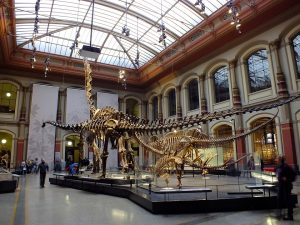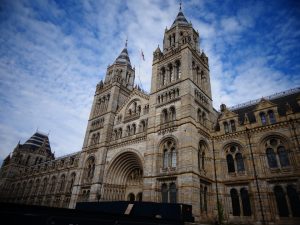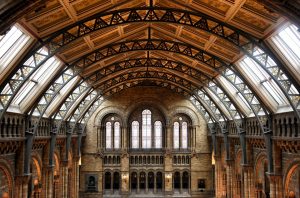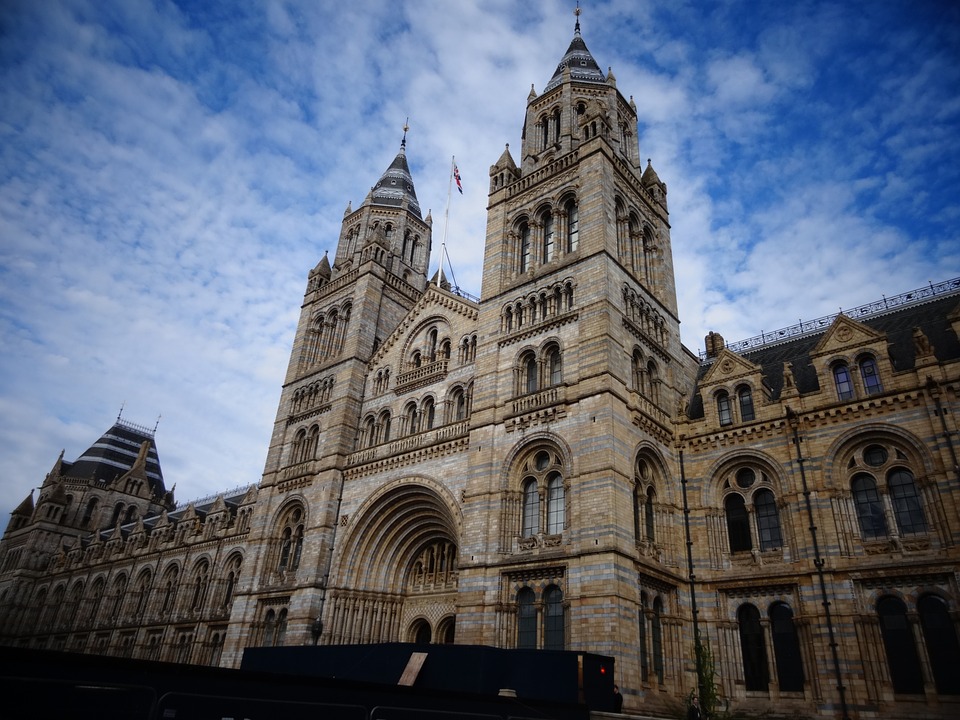If you are an admirer of nature and what this earth has to offer, the Natural History Museum of London is the place for you. Whether it be small moon rocks, dinosaur relics from million from years ago or just unique plantations, you will be mesmerized by every nook and corner of this lovely place.
The Natural History Museum holds the title of holding one of the most significant collections of natural treasures in the world. It has specimens exceeding 70 million in number with the honor of adding half a million items each year.
Table of Contents
About the Natural History Museum
The Museum was laid down by Sir Hans Sloane in 1754 (which was later moved to its current position in 1881). Sir Hans Sloane contributed a lot of items to the British Museum that held importance in natural history but wasn’t much happy about the British Museum’s collection of goods. Consequently, he decided to generously donate for this new building where more and more of these items can be kept.
The museum guests almost 5 million visitors each year and holds the title of one of the leading museums in England in line with British Museum, Albert Museum and Victoria Museum)
Some Keynotes About The Museum

This museum has four different sections. And each area has a uniqueness of its own. The Red Zone concentrates on the Earth, the Universe, and the planets that it possesses. You will also be able to find a brief history of human evolution and earth crusts here. The Green Zone concentrates on insects, minerals, fossils, and birds. The Orange Zone has a huge garden filled with wildlife objects but is only open for visitors from April to October. Last but not least, the Blue Zone emphasizes more on reptiles, dinosaurs, mammals, marine invertebrates.
Some of the many attractive articles at the Natural History Museum contains:

- Charles Darwin’s’ Origin of Species (1st Edition)
- An Earthquake Room where there is a simulator in the form of a supermarket where you step in feel the turbulence just like a real earthquake
- A cup made from human bones aging 14,700 years.
- First T.Rex relic ever found.
- A vast collection of 300 colored diamonds (The Aurora Collection)
- An archaeopteryx relic(a priceless collectible in the museum)
Some Random Guidelines
Holidays of any kind are very busy. On holidays, the museum is crowded with visitors, and one should and avoid going to the museum on such days.
Another tip is to use the side entrance as it’s less crowded. Going through the main entrance may make you go through the agony of standing in long queues which might take up to 2 hours.
Evening hours are the best hours to visit the museum as all the lights give the museum such a beautiful look.
As this is a huge museum, the minimum time that you should spend at the museum is 3-4 hours so that you don’t miss anything. Be reminded that this is just a minimum; visitors can easily wander around all day, keeping in view the number of objects that are present there to mesmerize visitors.
With “Museum Trails” you will never miss anything. It leads you through a self-guided tour throughout the museum’s four differently colored zones. The tour normally takes 1-2 hours.
If you are afraid of losing something out, you can also use Natural History Museum Visitor App for quick maps and information about the objects exhibited at the museum. This is not it; the app will keep you apprised with news about the latest events and exhibits.
To make your life easier there a cloakroom situated in Hintze Hall where you can hang your coats (2 pounds), umbrellas (1 pound) and luggage (from 2.5 to 5 pounds depending upon the weight). All these services are free for members and kids.
Timings and Costs

The timings are from 10 a.m. to 5:50 p.m. every day, except Christmas holidays from 24th to 26th of December every year.
The entry into the museum is free of charge for all the visitors unless there is a temporary exhibit on which the museum decides to charge a minimal fee.
Members have some extra privileges like they get priority at the entrance to the dinosaur gallery. And members can also meet the museum’s scientists who are there to guide the facts about the objects. Different categories of memberships costs ranging from £61 to £85 depending upon the privileges.
















